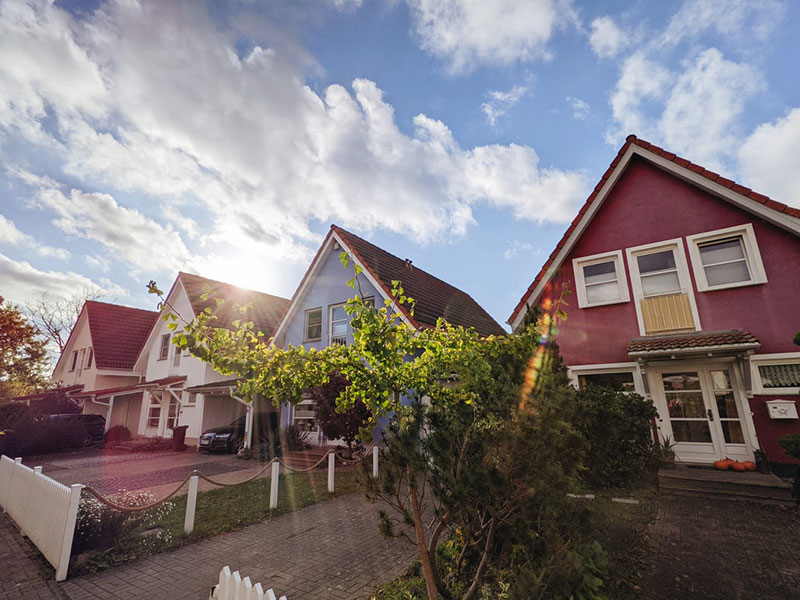Advertisement
A reverse mortgage is a type of loan that allows you to access capital from the equity that you have accrued in your home without having to actually sell it.
The amount that you are able to borrow will depend on who your lender is, how old you are, as well as the appraised value of your property. The benefits of a reverse mortgage include accessing your home equity for cash, not having to pay any tax on the cash that you borrow and being able to live in comfort during old age.
With a reverse mortgage, your lender pays you instead of the other way around. They will provide funds in exchange for your home equity.
Your reverse mortgage will only need to be repaid when you die, move, sell your home or run out of home equity to borrow from. Your lender will not come after you or your family for money, instead, they will get repaid via the sale of your home. This allows you to use your home equity to get funds for anything you like, without worrying about making any regular loan payments.
These features make reverse mortgages quite popular with some older homeowners. If you have a reverse mortgage, you may be able to refinance it if you wish. Similar to a conventional mortgage refinance, you will be replacing your reverse mortgage with a new one.
Refinancing your reverse mortgage may be a wise decision if you want to provide your significant other with some additional security by adding them to your loan, or tap into more funds from your home equity. Moreover, if interest rates have dropped since you took out your reverse mortgage, and/or your property has appreciated in value, then refinancing your reverse mortgage can save your family lots of money in the future.
How to Refinance Your Reverse Mortgage
As for qualifying criteria for reverse mortgage refinancing, you need to be at least 62 years of age, have paid or nearly paid off your home, use your property as your main residence, and prove that you are financially stable enough to meet all of the ongoing requirements of your loan (such as paying for homeowners insurance and property taxes).
With interest rates in Canada at decade lows, refinancing your reverse mortgage will likely give you a lower interest rate than your original mortgage, helping reduce the funds that will be owed to your lender.
You will also need to pay for some of the third-party costs involved, including notary, appraisal, recording, and title fees. Before refinancing your reverse mortgage, calculate the total of these costs to see if it is more than your savings from refinancing.
As for when you can refinance, you can refinance your reverse mortgage 18 months from your first reverse mortgage or prior refinance. Regarding how much you can get by refinancing, it will depend largely on the amount of equity that you have built over the years of homeownership.
As can be seen, refinancing a reverse mortgage has many benefits that should be strongly considered.
Types of Reverse Mortgages
A single-purpose reverse mortgage is the most affordable reverse mortgage type. The loan that is issued can only be used for a single purpose, which has been approved by the lender.
A proprietary reverse mortgage is a private loan that is backed by the business or businesses that develop them. Hence, if you own a property that has a very high value, then you will likely get a bigger loan advance when you take out a proprietary reverse mortgage.
A home equity conversion mortgage is a federally-insured mortgage. The money that is lent can be used for anything that you desire, unlike a single-purpose reverse mortgage.
Importance of Refinancing a Reverse Mortgage
You can receive a lump sum payment if you wish. Once the loan closes, you can receive all of the funds in one payment, or monthly installments if you prefer. The interest rate will be changed to fixed or variable depending on market conditions.
As well, you can take advantage of term payments. That is, you can receive equal monthly payments for a set period of time that you have requested, such as for 5 years. In addition to equal monthly payments, you can access a line of credit if you want.
As long as you live in your home as your main residence, you will have the option to tap into a line of credit if you require more money. The line of credit also applies to term payments. For example, if you were to agree to an 8-year term, then you would be able to access a line of credit during the term or even after the term if you wish.
Perhaps the biggest advantage of a reverse mortgage is that it allows you to access home equity without having to sell your property.
A reverse mortgage can also protect your spouse. By adding your spouse to the loan, they will be allowed to continue to live in your home without making any payments if you were to pass away.
Taking the Next Step
Refinancing your reverse mortgage is a smart move if interest rates have declined, your home has gone up in value, and if you wish to protect your spouse in the event that you pass away in the future.
Ultimately, refinancing your reverse mortgage will help provide you and your loved ones with peace of mind and financial stability and security.

